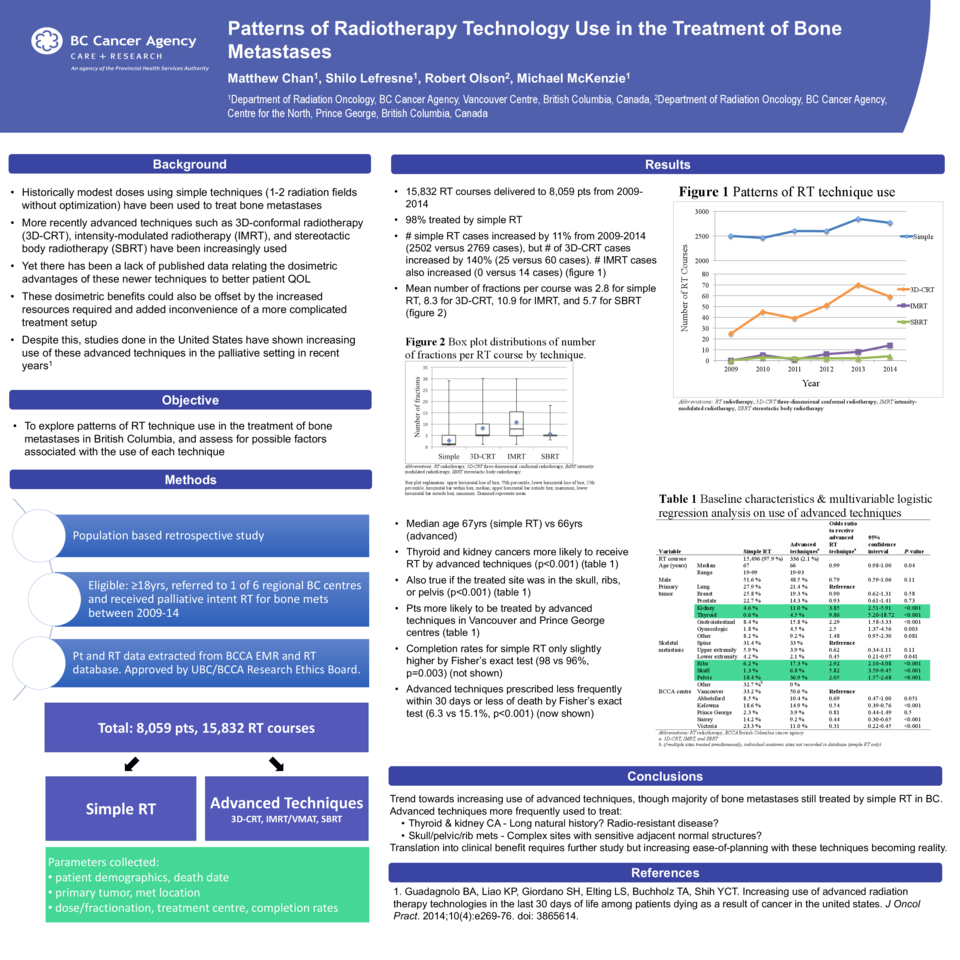Abstract
Background
In recent years, there has been a transition from simple radiation therapy (RT) planning towards more advanced techniques such as three-dimensional conformal radiation therapy (3D-CRT), intensity-modulated radiotherapy (IMRT), and stereotactic body radiotherapy (SBRT).
Objective
To analyze trends in RT treatment techniques for bone metastases over time.
Methods
Patients aged 18 and older who received palliative-intent RT for bone metastases between 2009-2014 at 6 regional cancer centers in British Columbia, Canada were reviewed. Descriptive statistics were used to summarize radiation technique patterns. Logistic regression modeling was used to assess the influence of patient, treatment, and provider variables on receipt of RT technique.
Results
We identified 8,059 patients and 15,832 courses of RT; overall, 97.9% of courses were planned by simple RT and 2.1% by 3D-CRT, VMAT, or SBRT. Despite the low overall use of advanced techniques, its use was significantly higher in all subsequent years compared to 2009 (p<0.05). The median age for patients treated with simple RT was 67 (19-99) versus 66 years (19-93) for advanced techniques. Patients with thyroid or kidney cancers (OR = 9.86, 3.85 respectively; p<0.05), or those receiving RT to skull, pelvic, or rib metastases (OR = 5.82, 2.05, and 2.92 respectively; p<0.001) were significantly more likely to be treated with advanced techniques. There were longer overall treatment courses, slightly lower completion rates (95.8 versus 98.3%, p<0.05), and a lower utilization rate within 30 days of death (6.3 versus 15.1% of total courses for each technique, p<0.001), with advanced techniques. Finally, advanced techniques were more likely to be delivered in the centres in Prince George and Vancouver.
Conclusion
We observed a trend towards increasing use of advanced techniques, though the majority of bone metastases are still treated by simple RT in British Columbia.






